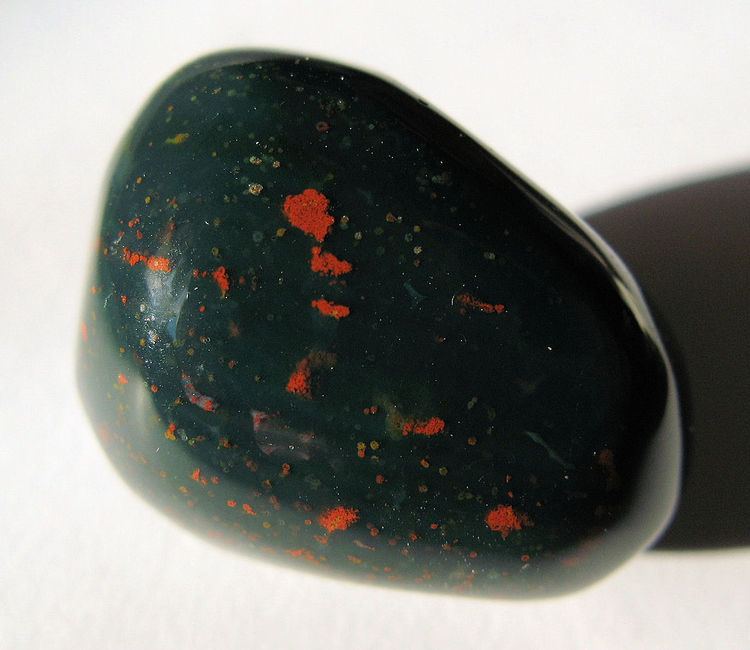Category Mineral Crystal system Trigonal Luster Vitreous | Formula
(repeating unit) SiO2 (silicon dioxide) Mohs scale hardness 6.5–7 | |
 | ||
Color Green with red or yellow spots | ||
The mineral aggregate heliotrope (from Greek ἥλιος, hḗlios “Sun”, τρέπειν, trépein “to turn”), also known as bloodstone, is a variety of jasper or chalcedony (which is a cryptocrystalline mixture of quartz). The "classic" bloodstone is green jasper (chalcedony) with red inclusions of hematite.
The red inclusions are supposed to resemble spots of blood; hence the name "bloodstone". The name "heliotrope" derives from various ancient notions about the manner in which the mineral reflects light. These are described, e.g., by Pliny the Elder (Nat. Hist. 37.165).
Heliotrope was called "stone of Babylon" by Albert the Great and he referred to several magical properties, which were attributed to it from Late Antiquity. Pliny the Elder (1st century) mentioned first that the magicians used it as a stone of invisibility. Damigeron (4th century) wrote about its property to make rain, solar eclipse and its special virtue in divination and preserving health and youth.
Heliotrope features as an invisibility stone in one of Boccaccio's stories in the Decameron and as an healing magic item in a musical comedy derived from it.
Heliotrope is sometimes used in carved signet rings and is the traditional birthstone for March.
